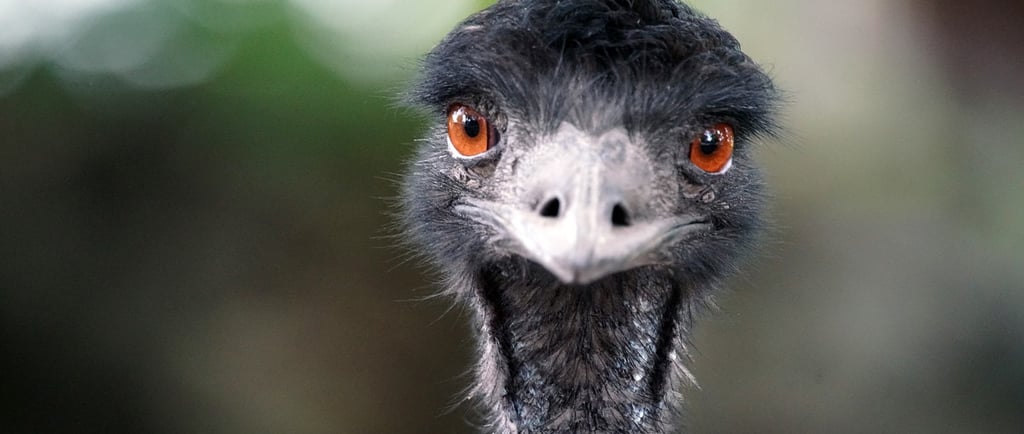Running Through Australia - The Emu Express
Wellcome into the marvelous world of animals with the Animal Story Folders 🦝🦋🐾, my favourite material found in the Biology chapter Introducing Animals! 🌿 These folders are designed to ignite curiosity and prepare children for independent research. Through engaging oral presentations and beautifully organized folders, children explore essential topics like animal names, habitats, diets, physical features, reproduction, life cycles, and predators. This material provides a foundation for critical research skills while fostering a deep connection to the animal kingdom. Whether it’s uncovering the secrets of a raccoon’s night vision 🦝, a butterfly’s life cycle 🦋, or the survival tactics of a snow leopard 🐆, these folders encourage children to ask questions and seek answers.🐾📚
BIOLOGY STORIES
12/5/20243 min read


When walking through the golden grasslands of Australia 🌾, suddenly you will spot a towering bird sprinting across the horizon. With long legs and a sleek body, the emu (Dromaius novaehollandiae) is one of the most impressive runners in the animal kingdom, reaching speeds of up to 50 km/h (31 mph)—as fast as a tram speeding through the city! 🚊 At 150–190 cm (5–6 feet) tall, it’s the second-largest bird in the world, yet it can’t fly 🦤. Instead, it relies on its powerful legs to travel long distances and escape predators like dingoes 🐕.
The emu is a master at surviving in Australia’s wild and dry grasslands🌞. Its soft, brown feathers act like a special jacket, keeping it cool during the day and warm at night. These feathers are unique—they’re double-shafted, which means each feather has two parts, making the emu look fluffy while also protecting it from the hot sun ☀️.
An emu’s diet is as interesting as the outback itself. Emus are omnivores, which means they eat both plants and animals. They love seeds, fruits, flowers, insects, and even tiny animals 🐜🌱. They search for food using their sharp eyes and strong beaks, foraging all day long. During droughts, when water is hard to find, emus can go for weeks without drinking. They get moisture from the plants and insects they eat, and they even swallow small pebbles to help break down their food inside their stomachs!
One of the most fascinating things about emus is their family life ❤️. Male emus are amazing dads. After the female lays a group of 5–15 dark green eggs, the male takes over completely. For nearly two months, he sits on the eggs to keep them warm. During this time, he hardly eats or drinks 🥚. He carefully turns the eggs with his beak and keeps them cozy under his soft feathers.
When the chicks hatch, they look like fluffy little zebras, with brown and white stripes 🌟. The father emu stays with his chicks, protecting them from predators and teaching them how to find food. These little ones grow up quickly, learning to run and forage just like their dad!
Emus are also very special in Aboriginal Australian culture. In their stories, called Dreamtime stories, emus are symbols of strength and endurance 🌏. Some tales say the emu’s long legs created paths across the land, while others say they made patterns in the stars.
Even though they are large, emus are clever and cautious. They use their height to look out for danger and can turn quickly on their strong legs to escape predators 🦅. During the breeding season, they make low, booming sounds like drumbeats 🥁, which can be heard across the grasslands.
📜 Scientific Name: Dromaius novaehollandiae
📏 Order: Casuariiformes
🌳 Family: Casuariidae
📐 Average Size: 1.5–1.9 meters (5–6 feet) tall
⚖️ Average Weight: 30–45 kilograms (66–99 pounds)
🕰️ Lifespan: 10–20 years
✨ Unique Feature: Powerful legs for running and double-shafted feathers for insulation
Let's see what else we can find in this Animal Folder about The Emu
Now that we’ve discovered so many amazing things about the emu, I wonder—what’s your favorite animal? 🐾 Maybe it’s one you already know a lot about, or perhaps there’s an animal you’ve always wanted to learn more about.
You can use what we’ve done today as your guide to create your very own animal folder or booklet 📚! Think about including details like the animal’s name, where it lives, what it eats, its unique features, and its predators. You can add drawings, fun facts, or even tell a story about your animal!
When you’re done, you can share your folder or booklet with us. We can all learn something new from your research, and you’ll be the expert on your favorite animal! 🌍✨ So, with what animal you will go on adventure research ?
After introducing one animal folder and demonstrating how to work with the cards in the folder—discussing what can be seen in the photos, reading the text cards, and matching them to the correct images. I will point out the rest of the animal folders, usually 4–5 additional folders with different animals . They will have the opportunity to read the kickoff stories, to examine the photos, read the text cards, and match them on their own, deepening their understanding through their independent explorations with this material in the Biology shelf. This approach fosters observation, reading, and research skills while allowing each child to follow their own interests and creativity.
With Montessori joy,
Vanina 😊

